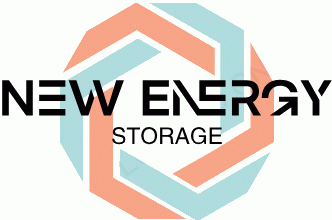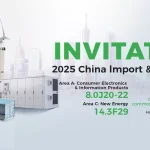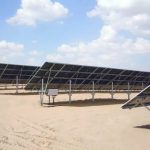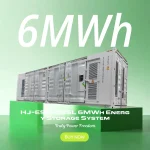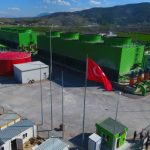While the Netherlands continues to be at the forefront of renewable energy, Dutch battery storage innovation becomes increasingly vital as it is crucial to integrate into renewable sources. As Dutch ambitions for ambitious development in renewable power continue to gain momentum, advances in battery storage technology continue to be a vital tool. These technologies—running on a scale from new battery technologies to disruptive Solar PV Container technologies—are at the core of market challenges and giving the stability for renewable energy business ventures. This article investigates the new Dutch innovations of battery storage, brings up the subject of consolidating renewable energy technologies, and asks questions about challenges faced by the Solar PV Container Energy Storage Market.
Overview of Dutch Battery Storage Advancements
The Netherlands is famous for its dedication to green energy solutions. Dutch battery storage technology has made tremendous progress over the last ten years, thanks to technological advancements and government support. Advanced energy storage systems come with high capacity and fast charging and long lifespan.
Some of the strongest trends are:
- High-performance Batteries: Improved BMS and emerging battery chemistry have enhanced energy storage efficiency.
- Integration with Renewable Sources: Energy storage systems are beautifully integrated with renewable energy systems which give a ensured supply of electricity even during instances of intermittent availability.
Some intriguing developments are highlighted below:
- Modular Designs: New designs such as the Solar PV Container systems enable scalable and deployable energy storage systems easy to integrate.
- All the developments have helped the Netherlands realize the essential prerequisite of stable and secure energy because renewable sources enhanced their share of the energy landscape.
Innovations in Solar PV Container Technology
Solar PV Container systems are perhaps the most innovative development in Dutch battery storage. The systems are integrated with photovoltaic panels, energy storage, and inverters in one portable package and are very effective for both grid and off-grid applications.
Key Features:
- Space-saving and Modular: The modularity allows deployment at high speeds and easy scaling, which makes it ideal for city and hard-to-reach locations.
- Effective Energy Storage: Used in conjunction with cutting-edge energy storage technology, these containers maximize energy capture and delivery.
- Increased Durability: Built to endure harsh weather and environmental conditions, Solar PV Containers offer long-lasting reliability.
- Market Flexibility: They offer a flexible solution that can be built to address specialized energy needs, both for managing peak loads and providing round-the-clock energy supply.
Solar PV Container technology advancements are dismantling the hurdles to most of the past market barriers and opening the door to wide-scale renewable integration.
Breakthroughs in Energy Storage Technologies
The backbone of renewable integration is in energy storage. Day by day, innovations in the Dutch market are moving towards more efficiency and sustainability.
Breakthroughs in Recent Technologies
- Next-Generation Batteries: Lithium-ion and next-generation solid-state battery technologies are boosting energy density, reducing degradation, and reducing cost.
- Smart Energy Management: AI and IoT technology integration in energy management systems provides real-time monitoring, predictive maintenance, and optimized charging cycles.
- Thermal Management Systems: Advanced thermal regulation and cooling technologies provide high-performance battery operation in any conditions.
- Hybrid Energy Systems: Hybridization of different storage technologies, including batteries and supercapacitors, provides improved performance and resilience.
These technological advances have a significant role to play in the overall reliability and efficiency of energy storage systems in the Netherlands.
Breaking Market Challenges
Despite explosive growth, the energy storage market still suffers from a line of challenges that must be tackled to promote sustainable growth.
Primary Market Challenges:
- High Initial Costs: Initial capital required from pioneering energy storage technologies remains a barrier for some projects.
- Regulatory Barriers: Unpredictable regulatory regimes will lead to delays in availability of new energy storage technology in the market.
- Supply Chain Limitations: Volatility in the supply chain of lead components may throw production schedules into chaos.
- Integration Challenges: Interoperability of newer energy storage facilities (like Solar PV Containers) with older grid infrastructure must be ensured with caution.
Remedies to these chokepoints are being pursued through government incentives, more robust regulatory processes, and more manufacturer-market coordination.
Integration with Renewable Power Projects
Integration of energy storage solutions is essential to make the best use of renewable energy. The majority of renewable power projects in the Netherlands are integrated with energy storage so that the power supply can be stable and, in addition, the volatility of solar and wind power can also be smoothed out.
How Integration Works:
- Energy Buffering: Energy storage systems store energy during periods of surplus generation and release it when generation is low.
- Grid Stability: Demand-supply balance, these systems provide grid stability and also ease the burden on peak loads.
- Cost Efficiency: Hybrid systems reduce reliance on expensive backup power and lower the energy cost overall.
- Environmental Impacts: Increased energy storage results in lower greenhouse gas emissions and facilitates cleaner, greener energy supply.
Marriage of renewable power technology and energy storage is one of the cornerstone principles of Dutch green energy policy.
Scenario for the Future of Renewable Energy in the Netherlands
The prospects for renewable energy in the Netherlands are rosy, largely due to ongoing advances in energy storage. The future holds:
- Faster Investment: With robust public and private investment support, energy storage technology spending will rise.
- Advances in Technologies: R&D will continue to produce more efficient, resilient, and cheaper storage systems.
- Broader Adoption: As technology advances, more and more renewable energy projects will use new energy storage technology, further stabilizing the grid.
- Green Growth: It will result in a huge reduction in carbon emissions, as consistent with national and global sustainability goals.
By doing all this, the Netherlands is not only setting up its renewable energy infrastructure but also setting an example for sustainable energy integration globally.
